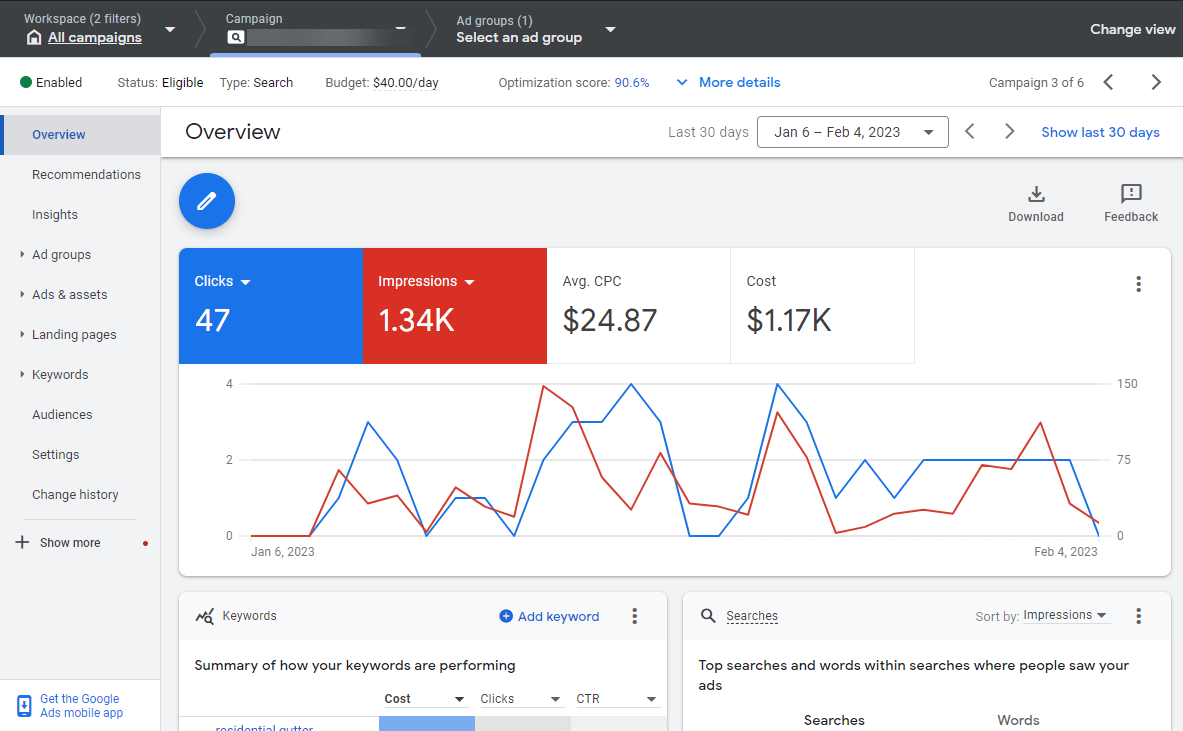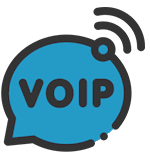Are you looking to step up your digital marketing game and drive more traffic to your website? You’ve come to the right place! Google Ads is a powerful tool that can help businesses of all sizes increase their online visibility, attract new customers, and grow revenue. However, to truly maximize its potential and make the most out of your ad spend, it’s crucial to develop effective campaigns that resonate with your target audience.
In this article, we’ll walk you through some essential tips from Pegas Technology Solutions for building successful Google Ads campaigns – from setting clear goals and objectives to continuously optimizing and refining your strategies. By following these best practices, not only will you be able to create compelling ads that grab users’ attention but also improve overall campaign performance and ROI. So buckle up – let’s dive into the world of Google Ads and unlock its full potential for your business!
Set Clear Goals and Objectives
Before diving in, it’s crucial that you establish clear goals and objectives for your campaign to ensure its success. Think about what you want to accomplish with your Google Ads campaign and be specific when defining these objectives. Goal measurement is an essential part of this process, as it allows you to track the progress of your campaign and make necessary adjustments along the way. Objective setting can encompass anything from increasing brand awareness, driving website traffic, or generating leads or sales.
To set effective goals and objectives for your Google Ads campaign, start by identifying your target audience and determining their needs or pain points that your product or service can address. Next, establish key performance indicators (KPIs) that will help you measure the success of your campaign. These KPIs may include metrics such as click-through rate (CTR), cost per click (CPC), conversion rate, return on ad spend (ROAS), etc. By having a clear understanding of what you want to achieve and how you’ll measure success, you’ll be able to create more focused and effective campaigns that deliver tangible results.
Conduct Thorough Keyword Research
Diving deep into keyword research ensures you’re targeting the right audience and maximizing your ad’s potential. To conduct a comprehensive keyword analysis, make use of various research tools available online such as Google Ads Keyword Planner, SEMrush, or Moz Keyword Explorer. These tools help you identify high-performing keywords relevant to your business, understand search volume trends over time, and discover new keyword opportunities while getting insights on which terms your competitors are targeting.
When conducting thorough keyword research, focus on finding a mix of both short-tail and long-tail keywords that best describe your products or services. Short-tail keywords are broad phrases with higher search volumes but might have more competition. Long-tail keywords are more specific phrases with lower search volumes but often come with less competition and higher conversion rates. By carefully selecting the right combination of these terms for your campaigns, you can optimize visibility among target customers, reduce costs per click (CPC), and ultimately drive better results from your Google Ads efforts.
Optimize Ad Copy and Landing Pages
To truly resonate with your target audience and boost conversion rates, it’s essential to create compelling ad copy and fine-tune your landing pages for the best possible user experience. By implementing effective copywriting techniques and carefully selecting your landing page visuals, you can ensure that both your ads and landing pages work together seamlessly to drive conversions.
Keep these tips in mind when optimizing your ad copy and landing pages:
| Aspect | Tip | Example |
|---|---|---|
| Ad Copy | Use strong action verbs in headlines & CTAs | “Claim Your Discount Now” |
| Highlight unique selling points | “Free Shipping on All Orders” | |
| Landing Page Visuals | Use high-quality images that reflect your brand identity | Professional product photos or lifestyle images featuring products |
| Optimize image file sizes for faster loading times | Compress images using tools like TinyPNG or ImageOptim | |
| Copywriting Techniques | Write clear, concise copy that speaks directly to customer needs | Focus on benefits, not features; address pain points |
By paying close attention to these aspects of your Google Ads campaigns, you’ll be able to craft more engaging ads that lead to higher click-through rates and better-converting landing pages.
Utilize Ad Extensions
Utilize ad extensions to enhance your ads with additional information, making them more appealing and informative for potential customers. By incorporating features such as callouts, sitelinks, and structured snippets, you can increase ad visibility and boost click-through rates. Don’t miss out on this opportunity to improve your Google Ads campaign’s performance through the strategic use of ad extensions that cater to your target audience’s needs and preferences.
Enhance your ads with additional information
Boost your ad’s appeal by incorporating extra details that’ll grab your audience’s attention and make them want to know more. By using ad customization, you can enhance your ads with additional information that is relevant to your target audience. This will not only improve the overall performance of your campaigns but also increase engagement with potential customers. Information relevance plays a crucial role in making sure that the added details are useful for users and drive their interest in clicking on your ad.
To effectively provide additional information in your ads, consider including these elements:
| Element | Description |
|---|---|
| Sitelink Extensions | Add more links to specific pages on your website, allowing users to navigate directly |
| Callout Extensions | Highlight unique selling points, promotions or features of your product/service |
| Structured Snippets | Showcase particular aspects of your offering, such as product categories or services |
Remember that each element should be tailored according to the needs and preferences of your target audience. By doing so, you will create a more personalized experience for users and ultimately boost the effectiveness of your Google Ads campaigns.
Increase ad visibility and click-through rates
Now that you’ve enhanced your ads with additional information, it’s time to focus on increasing their visibility and click-through rates. This can be achieved through strategic ad scheduling and geo-targeting practices that will ensure your ads reach the right audience at the right time.
Ad scheduling allows you to control when your ads are displayed throughout the day, ensuring they appear during peak hours when your target audience is most likely online. By analyzing historical data on user engagement and activity, you can identify the best times for maximum exposure and adjust your ad campaigns accordingly. Geo-targeting helps you target specific geographic locations so that your ads reach users in areas where they’re most relevant. Together, these strategies can significantly increase both visibility and click-through rates for your Google Ads campaigns, leading to better overall performance and return on investment.
Implement Conversion Tracking
Don’t miss out on the power of conversion tracking to take your campaign performance to new heights! By implementing conversion tracking, you’ll gain valuable insights into how effective your Google Ads campaigns are at driving customer actions. Conversion analytics will help you identify which ads and keywords are producing the best results, enabling you to optimize your budget and improve overall ROI. However, be aware of tracking pitfalls that can lead to inaccurate data or missed opportunities. To avoid these issues, ensure that you’ve set up proper tracking parameters and monitor them regularly.
To get started with conversion tracking, first define what conversions matter most for your business – whether it’s form submissions, purchases, phone calls or other desired actions. Then create a unique conversion action in Google Ads for each type of goal. Install the necessary code snippets on your website and configure any additional settings such as attribution models and conversion windows. Once everything is set up correctly, regularly review your conversion data to make informed decisions about adjusting bids, refining targeting options or testing new ad creative elements based on what’s driving success for your campaigns. Remember that leveraging conversion analytics is an ongoing process – one that requires continuous analysis and optimization – but the effort will be well worth it when you see tangible improvements in your campaign performance!
Monitor and Adjust Bidding Strategies
It’s crucial to keep a close eye on your bidding strategies and make adjustments as needed, ensuring you’re maximizing both efficiency and results in your online advertising efforts. One way to do this is by utilizing bid adjustments, which allow you to increase or decrease bids based on various factors such as device type, location, ad scheduling, and more. Keeping track of how these factors impact the performance of your campaigns will help you identify opportunities for improvement and optimize your bidding strategy accordingly. Additionally, consider using strategy automation tools offered by Google Ads, as they can save time while still maintaining control over your bids.
When monitoring your bidding strategies, be prepared to adjust them frequently based on data analysis from your campaigns. Regularly review important metrics like cost-per-click (CPC), click-through rate (CTR), conversion rates, return on ad spend (ROAS), and others that are relevant to the specific goals of each campaign. Keep an eye out for trends indicating that certain keywords or targeting methods are underperforming or exceeding expectations, then modify bids accordingly in order to maximize results while staying within budget constraints. Remember that successful Google Ads campaigns require ongoing attention and adjustment; stay proactive in refining your bidding strategies for optimal performance.
A/B Test Ad Variations
A/B testing ad variations can significantly boost the success of your online advertising efforts, so let’s dive into how to do it right. The idea behind A/B testing is to create two or more different versions of an ad and compare their performance against each other. This involves tweaking elements such as ad visuals, headlines, descriptions, and calls-to-action. It’s essential to test only one variable at a time so you can attribute any changes in performance directly to that specific element. When deciding which variables to test first, consider the ones that are most likely to impact your target audience’s decision-making process.
To run an effective A/B test for your Google Ads campaign, start by creating multiple ad variations within the same ad group. This ensures they will compete against each other for impressions and clicks based on their relevance and quality scores. Monitor the performance of each variation over a period of time (at least one week), taking note of metrics like click-through rate (CTR), conversion rate, cost per conversion, and overall return on investment (ROI). Once you’ve gathered enough data from this experiment, analyze the results to determine which version performed better and why. Based on these insights, you can then refine your ads accordingly – ultimately leading to increased engagement with your target audience and improved overall campaign performance.
Continuously Optimize and Refine Campaigns
Continually optimizing and refining your campaigns is crucial for maintaining their success and ensuring a solid return on investment. Regular campaign evaluation and performance analysis will help you identify areas where adjustments can be made to improve overall effectiveness. Keep track of key performance indicators (KPIs) such as click-through rates, conversion rates, and cost per acquisition to gain insights into what’s working well and what needs improvement.
To optimize your Google Ads campaigns, try adjusting bids based on device type, geographic location, or time of day to target high-performing segments more effectively. Additionally, consider testing different ad extensions to provide potential customers with more information about your business or products. Finally, don’t forget to regularly review your keyword list for relevancy – adding new keywords that match the intent of your target audience while removing low-performing ones can significantly improve the efficiency of your campaigns. Stay proactive in making these changes and continually monitor results so you can make data-driven decisions that drive better outcomes for your business.
Frequently Asked Questions
How can I ensure my ads are reaching the right audience through Google Ads targeting options?
To ensure your ads are reaching the right audience through Google Ads targeting options, it’s crucial to utilize targeted keywords and strategic ad placement. Start by conducting thorough keyword research to identify relevant terms that your potential customers are likely to search for. Once you’ve compiled a list of targeted keywords, incorporate them into your ad copy and landing pages. Next, consider your ad placement by selecting specific websites, apps, or even YouTube channels where you want your ads to appear. By combining these strategies with other targeting options such as geographical location, demographics, interests, and remarketing lists, you’ll be well on your way to connecting with the right audience and maximizing the effectiveness of your Google Ads campaign.
What role does audience segmentation play in creating effective Google Ads campaigns?
Audience segmentation plays a crucial role in creating effective Google Ads campaigns by allowing you to target specific groups of people based on their interests, behaviors, and demographics. By leveraging audience insights, you can identify the most relevant segments for your products or services and tailor your ad messaging to resonate with them. This not only leads to higher engagement and click-through rates but also maximizes the return on investment (ROI) for your advertising budget. So, make sure to harness the benefits of audience segmentation when crafting your Google Ads strategy – it’ll help you reach the right people at the right time with messages that truly speak to their needs and preferences.
How can I effectively manage my budget allocation across various ad groups and campaigns?
To effectively manage your budget allocation across various ad groups and campaigns, start with budget optimization by analyzing the performance of each ad group. Regularly review key metrics such as cost-per-click, conversion rate, and return on investment to identify high-performing and underperforming ad groups. Allocate more budget to those that generate better results while reducing or pausing low-performing ones. Keep testing new ad variations and targeting options within your successful ad groups to further improve performance. By consistently monitoring and adjusting your budget based on ad group analysis, you’ll ensure optimal use of resources for maximum campaign effectiveness.
What is the significance of Quality Score in Google Ads and how can I improve it?
Quality Score is a crucial factor in determining the success of your Google Ads campaigns, as it directly impacts your ad’s ranking and cost per click. To optimize your Quality Score, focus on three primary factors: expected click-through rate, ad relevance, and landing page experience. Ensure that your ads are highly relevant to the keywords you’re targeting and provide a seamless user experience when users land on your website. By continually monitoring and improving these factors, you’ll be well on your way to achieving higher Quality Scores and ultimately better results for your campaigns.
How can I use remarketing strategies to enhance the performance of my Google Ads campaigns?
To boost your remarketing success and achieve performance optimization, focus on creating highly targeted ad campaigns that speak directly to specific audience segments. Start by analyzing your website visitors’ behavior and identifying key groups based on their interests, past purchases, or browsing history. Next, craft tailored ads for each segment with compelling messages that address their unique needs or preferences. Don’t forget to set up conversion tracking to monitor the effectiveness of your remarketing efforts and make data-driven adjustments as needed. By employing these strategies, you’ll enhance the performance of your Google Ads campaigns and increase your chances of converting potential customers into loyal clients.
Conclusion
In conclusion, running an effective Google Ads campaign requires dedication and attention to detail. By setting clear goals, conducting thorough research, and optimizing your ads and landing pages, you’ll be well on your way to achieving success with your campaigns.
Remember that continuous improvement is key—monitor performance, adjust bidding strategies, and test ad variations to ensure maximum results. With persistence and expertise, you’ll master the art of Google Ads in no time!











